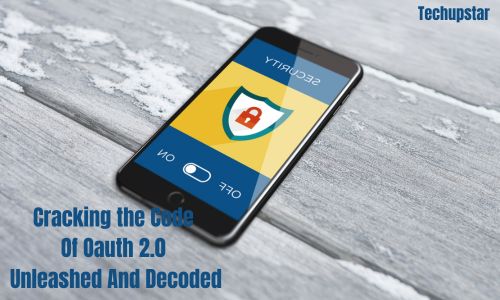In this progressive digital age, parental control has become paramount for ensuring the online safety of children. With the growing prevalence of smart devices and internet access, parents are faced with the challenge of protecting their children from inappropriate content and online dangers. The Step 2 authentication emerges as a powerful tool to cushion the security of parental control measures, providing an extra strand of defense against unauthorized access. In this article, we shall explore the significance of step 2 authentication for parental control and explore into various methods to implement it effectively.
Definition and Purpose of Step 2 Authentication For Parental Control

The Step 2 authentication, which is also known as two-step verification or two-factor authentication, is a security measure that adds an additional strand of authentication beyond the traditional password. The purpose of step 2 authentication for parental control is to fortify access to parental control settings and ensure that only authorized individuals can make changes or override restrictions. It serves as a safeguard against potential breaches and unauthorized tampering with parental control configurations.
Types of Step 2 Authentication For Parental Control
Passwords and PINs:
One of the most common forms of step 2 authentication is using strong passwords or PINs. It involves creating complex, unique, and hard-to-guess passwords or PINs that act as the first authentication factor. By employing a combination of uppercase and lowercase letters, numbers, and special characters, parents can create robust barriers against unauthorized access.
- Biometric Authentication:
Biometric authentication methods, such as fingerprint recognition and facial recognition, provide a convenient and secure means of step 2 authentication. By associating a unique physical characteristic with an authorized user, biometrics offer enhanced protection against identity theft or password breaches. However, it’s important to note that the availability of biometric authentication may vary depending on the device being used.
- Two-Factor Authentication (2FA):
Two-factor authentication (2FA) involves combining two different authentication methods for heightened security. This can include sending a verification code via SMS to a trusted phone number or using an authentication app like Google Authenticator. By requiring both a password and a verification code, 2FA significantly reduces the risk of unauthorized access.
Implementing Step 2 Authentication for Parental Control
In other to implement step 2 authentication effectively for parental control, several considerations must be taken into consideration.
- Choosing the Right Authentication Method: Parents should consider the specific needs and preferences of their family members when selecting an authentication method. Factors such as device compatibility, ease of use, and individual capabilities should be considered to ensure a seamless and user-friendly experience.
- Setting Up Step 2 Authentication: Parents can follow a step-by-step guide provided by the device or platform manufacturer to enable step 2 authentication. This typically involves accessing security settings, configuring the desired authentication method, and linking it to the parental control account. In case of any difficulties, online resources and support forums can provide valuable troubleshooting tips.
- Educating Parents and Guardians: It’s crucial to educate parents and guardians about the importance and benefits of step 2 authentication. They should be provided with clear instructions on how to use and manage the chosen authentication method effectively. Awareness campaigns and informative resources can play a vital role in empowering parents to protect their children in the digital realm.
Best Practices for Step 2 Authentication For Parental Control
In other to maximize the effectiveness of step 2 authentication For Parental Control, parents should follow these best practices:

- Regularly Updating Passwords or PINs: By regularly making changes in passwords or PINs helps prevent unauthorized access. Parents should encourage the use of complex, unique passwords or PINs and avoid reusing them across different accounts.
- Enabling Biometric Authentication: Where available, parents should enable biometric authentication, such as fingerprint or facial recognition, as it offers a seamless and secure method for step 2 authentication. Biometric data is difficult to replicate, providing an extra layer of protection.
- Utilizing Two-Factor Authentication (2FA): Parents are strongly advised to enable 2FA whenever possible. This ensures that even if someone gains access to the password or PIN, they would still need the second factor (e.g., verification code) to access the parental control settings.
Addressing Concerns and Limitations For Step 2 Authentication For Parental Control
While step 2 authentication significantly enhances parental control security, a few concerns and limitations should be addressed:
- Privacy and Data Security: Parents may have concerns regarding the privacy and security of their personal information or biometric data. Manufacturers and service providers should assure users that stringent measures are in place to protect their data from unauthorized access or misuse.
- Device Compatibility and Accessibility:It’s essential to ensure that step 2 authentication methods are compatible with a wide range of devices and platforms. Additionally, accessibility features should be considered to accommodate users with disabilities or special needs, enabling equal access to parental control features.
How do I set up Step 2 Authentication for parental control?
The process of setting up Step 2 Authentication varies depending on the device or platform you are using. Typically, you can access the security settings of the parental control application or device settings and follow the instructions provided to enable and configure Step 2 Authentication.
Why is Step 2 Authentication important for parental control?
Step 2 Authentication is important for parental control as it adds an extra layer of security, making it more difficult for unauthorized individuals to tamper with parental control settings. It helps protect children from accessing inappropriate content and ensures that parents have control over their children’s online activities.
Are there any potential risks associated with Step 2 Authentication For Parental Control?

While Step 2 Authentication significantly enhances security, there is a minimal risk of false positives or false negatives with biometric authentication. Additionally, if the authentication factors (password, verification code, etc.) are compromised, there is a risk of unauthorized access. However, these risks are generally low compared to the benefits of implementing Step 2 Authentication.
Conclusion:
The Step 2 authentication for parental control serves as an essential safeguard in the realm of parental control, reinforcing the protection of children in the digital landscape. By implementing this strong passwords, utilizing biometric authentication, and embracing two factor authentication, parents can fortify their control over online content and activities. As technology progresses, it is important for parents to stay informed about emerging authentication methods and adapt their security practices accordingly. Step 2 authentication for parental control is a powerful tool that empowers parents to create a safer digital environment for their children and ensure their online well-being.






